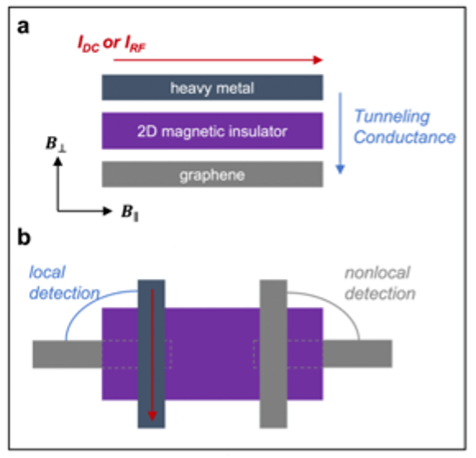Summary
Topological qubits offer a novel pathway to scalable quantum computing by simultaneously allowing for ease of coupling between qubits and strong decoupling of qubits from noise and dissipation. The most promising direction explores the topologically induced protection of theoretically predicted exotic quasiparticles, the so-called Majorana Zero Modes or MZMs. To-date MZMs, which follow non-Abelian statistics, have largely evaded unambiguous experimental demonstration. This project aims to provide a suitable material platform to realize MZMs. To achieve this, we develop a high-mobility semiconductor layer structure in order to observe the experimental signature of Majorana fermions on a platform that can be readily scaled and advanced to logical qubit devices. This project utilizes the molecular beam epitaxy (MBE) facility, the Quantum NanoFab and Characterization facility, and cryogenic measurement facilities available at UW to produce high-mobility material and turn epitaxial heterostructures into working devices. Furthermore, we collaborate with Jonathan Baugh’s group on quantum transport, fabrication and cryogenic measurements. This project advances all stages of developing a device based on topological qubits: design, MBE growth, fabrication and final testing. We would like to demonstrate and use the non-Abelian statistics of Majorana fermions to form topological qubits in epitaxial heterostructures and produce devices that could in the future lead to topologically protected quantum computers.

Figure 1. Concept visualization of two bound Majorana Zero Modes (MZM, in red), under a superconductor island (grey), all within a gate-defined quantum wire. The semi-transparent blue layer represents the host two-dimensional electron gas in the semiconductor single crystal.
Related Content

Enabling Next-Generation Sustainable Computing through Novel Multi-Valued-Logic Quantum Devices
As the demand for digital services grows, so does the need for data centres and transmission networks. Unfortunately, these data systems consume vast amounts of energy, resulting in nearly 1% of all energy-related greenhouse gas emissions. This project aims to invent novel quantum devices for highly energy-efficient computing that may help reduce the global digital […]
June 12, 2023

Coherent magnon generation, magnon condensation, and quantum spin liquids via spin pumping in 2D magnets
Summary Developing hybrid quantum systems is essential to harnessing the complementary advantages of different quantum technology platforms. This necessitates the successful transfer of quantum information between platforms, which can be achieved, e.g., by harnessing magnons, or spin wave excitations, in magnetic materials. Decoherence due to uncontrolled coupling of qubits to the environment remains a fundamental […]
February 1, 2023

Chiral Quantum Antenna Based on Multilayer Metasurface
Summary Individual atoms can act as stationary qubits and thus serve as nodes in quantum computing networks or as memories for quantum repeaters. However, to successfully use qubits based on single atoms suspended in free space, photons emitted by a single atom need to be efficiently collected. Conventionally, this can be done with high […]
September 20, 2018

Ultrafast Dynamical Studies of Valley-Based Qubits
Summary As monolayers, transition metal dichalcogenides (TMDCs) – such as tungsten diselenide (WSe2) – become direct-bandgap semiconductors capable of emitting light. Compared to conventional direct-bandgap semiconductors, such as III-V semiconductors like GaAs, excitons (quasiparticles made of an electron hole bound with an electron) and single-layer TMDCs (SL-TMDCs) have much stronger binding energy. Excitons and […]
June 29, 2018

